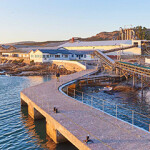Mackerel shortage, sardine bounty forcing sales strategy shift in Japan

The news of rebounding Japanese sardine stocks in early 2023 has been greeted with dismay by Japan's seafood industry, as the cheaper sardines are supplanting more profitable mackerel in the global marketplace.
Catches of spotlined sardines (Sardinops melanostictus) have been strong in Japan this year since the beginning of February, continuing an ongoing trend. But the species' abundance has been linked to a decline in mackerel catches.
Choshi, Japan-based Iida Suisan, a seafood trading company that sells 80,000 metric tons of seafood a year – a significant portion of which is sardines and mackerel – is struggling as a result of this phenomenon, according to Iida Suisan Salesperson Hikari Iida.
“There are a lot of sardines at the surface, while the mackerel are going deeper. Since the nets are operated near the surface, they just catch sardines,” Iida said. “So, this year, we really haven’t been getting many mackerel. The amount of mackerel caught is about 70 percent down from last year.”
Most of the sardines being caught are in making aquafeed, while mackerel is generally used for human consumption, and the price difference between the two products is significant. But due to the current shortage of mackerel, Japanese companies have had to adjust both their domestic and international sales strategies. Maruha Nichiro was forced raised prices on several mackerel products by between 11 and 23 percent in April, and Kyokuyo suspended the sale of 28 mackerel products in March.
“As for domestic mackerel, the record-breaking poor catch has continued since last year, and the size of the landed mackerel is getting smaller,” the company said. “We have made various efforts to procure raw materials, but it has become difficult to continue a stable supply while maintaining quality. We have decided to temporarily suspend sales.”
Mackerel is a big seller in Japan, especially since 2018, when it was popularized by TV shows touting its health benefits, and specifically its high omega-3 content.
Japanese seafood companies are also struggling to cope with ...
Photo by Chris Loew/SeafoodSource




Share